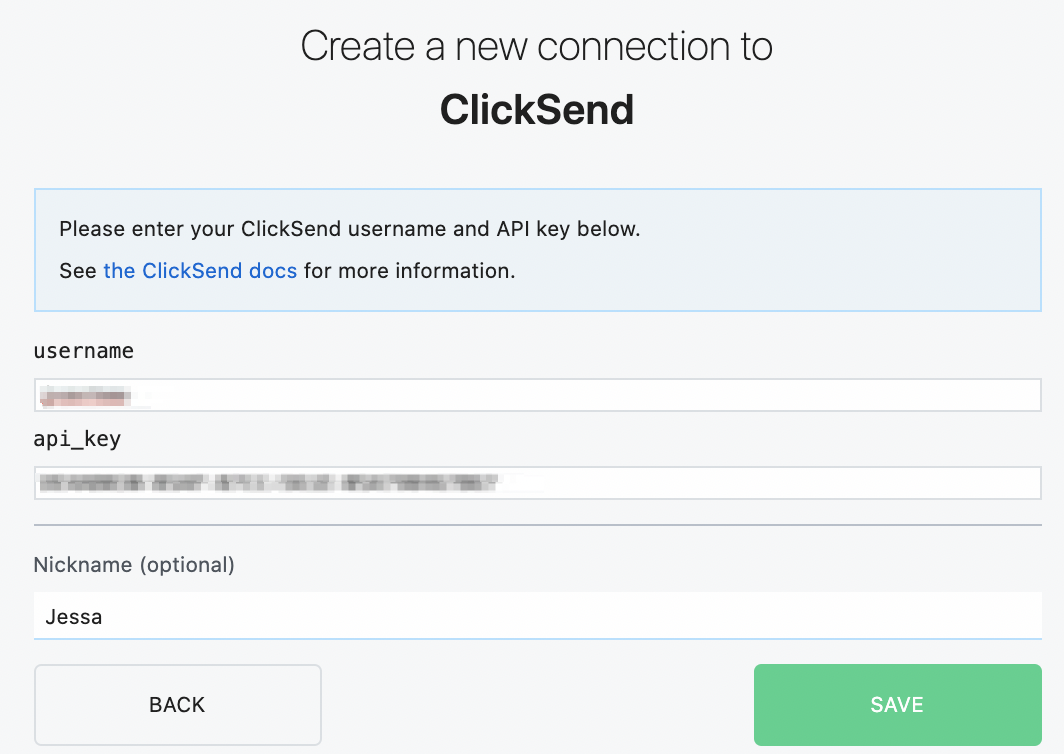What do you want to automate
with Google Classroom and ClickSend SMS?
Prompt, edit and deploy AI agents that connect to Google Classroom, ClickSend SMS and 2,500+ other apps in seconds.
Trusted by 1,000,000+ developers from startups to Fortune 500 companies
Popular Ways to Connect Google Classroom with ClickSend SMS#
Popular Google Classroom and ClickSend SMS Triggers#
Emit new event when an assignment in a course is marked as done.
Emit new event for each new incoming SMS message received. See the documentation
Emit new event when a new voice message is received or sent. See the documentation
Popular Google Classroom and ClickSend SMS Actions#
Creates a new contact in a specific list. See the documentation
Retrieve information about an assignment. See the docs here
Retrieve a list of assignments for a course. See the documentation
Sends a new MMS to one or multiple recipients. See the documentation
Sends a new SMS to one or several recipients. See the documentation
Overview of Google Classroom#
The Google Classroom API lets you tap into the educational space by managing courses, assignments, and student interactions programmatically. With this API, you can automate course creation, roster management, and content distribution, effectively bridging the gap between various educational tools and platforms. Leveraging Pipedream's serverless execution environment, you can build powerful workflows that respond to events in Classroom, sync data across platforms, and streamline the educational process for teachers and students alike.
Connect Google Classroom#
import { axios } from "@pipedream/platform"
export default defineComponent({
props: {
google_classroom: {
type: "app",
app: "google_classroom",
}
},
async run({steps, $}) {
return await axios($, {
url: `https://www.googleapis.com/oauth2/v1/userinfo`,
headers: {
Authorization: `Bearer ${this.google_classroom.$auth.oauth_access_token}`,
},
})
},
})
Overview of ClickSend SMS#
The ClickSend SMS API unlocks the potential to integrate robust messaging capabilities into your workflows. With Pipedream, you can not only send SMS messages programmatically but also automate notifications, streamline communication based on events, and much more. Whether you're confirming orders, alerting staff, or engaging with customers, ClickSend and Pipedream make these tasks seamless.
Connect ClickSend SMS#
import { axios } from "@pipedream/platform"
export default defineComponent({
props: {
clicksend: {
type: "app",
app: "clicksend",
}
},
async run({steps, $}) {
return await axios($, {
url: `https://rest.clicksend.com/v3/account`,
auth: {
username: `${this.clicksend.$auth.username}`,
password: `${this.clicksend.$auth.api_key}`,
},
})
},
})
Community Posts#

